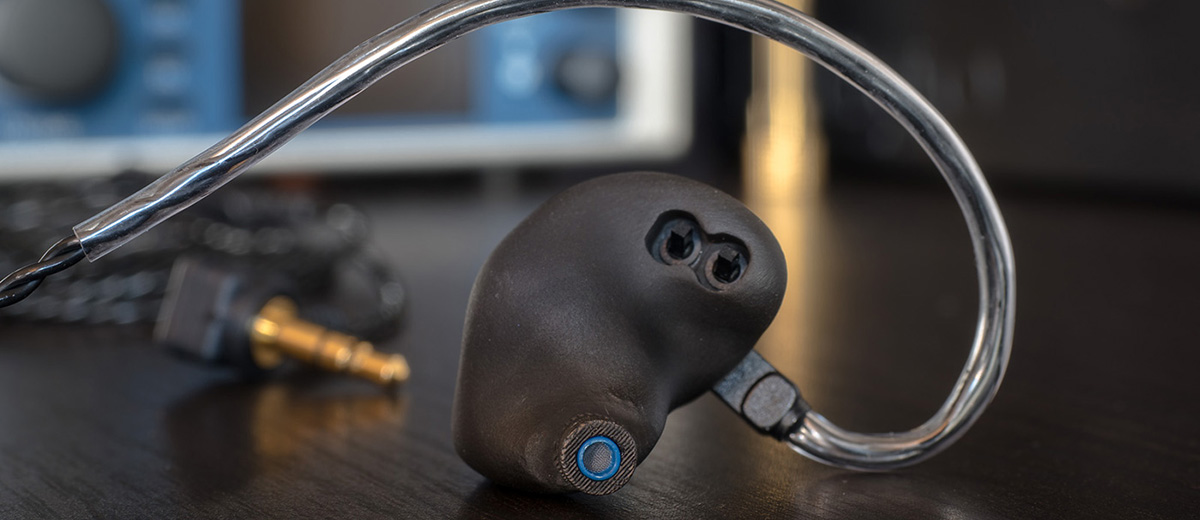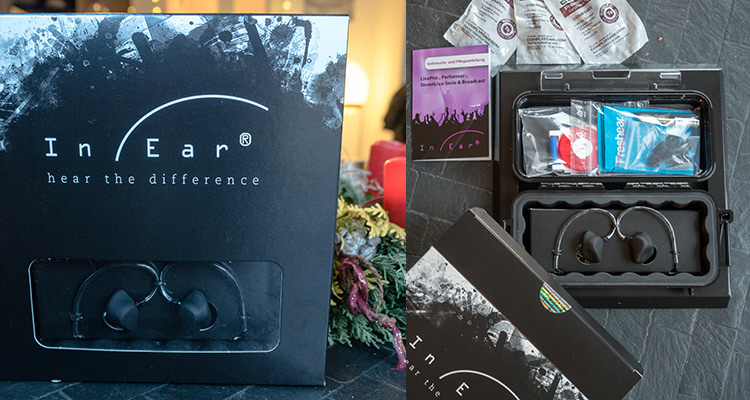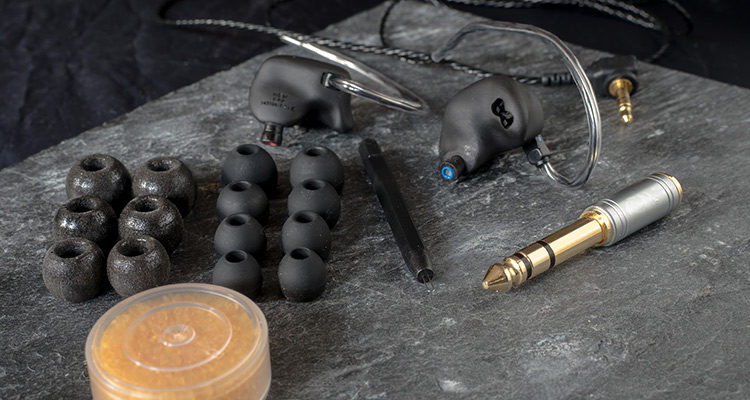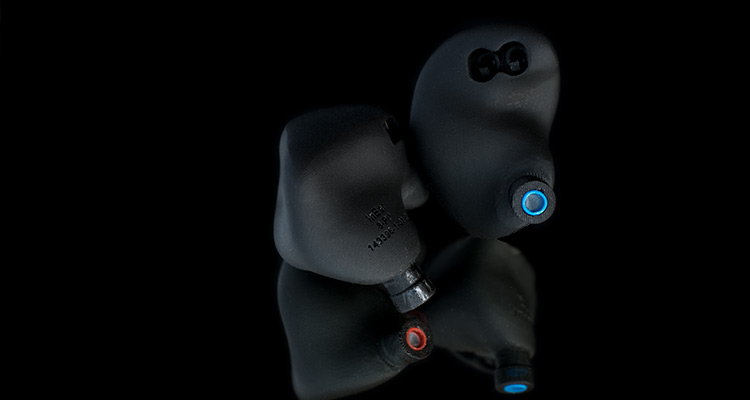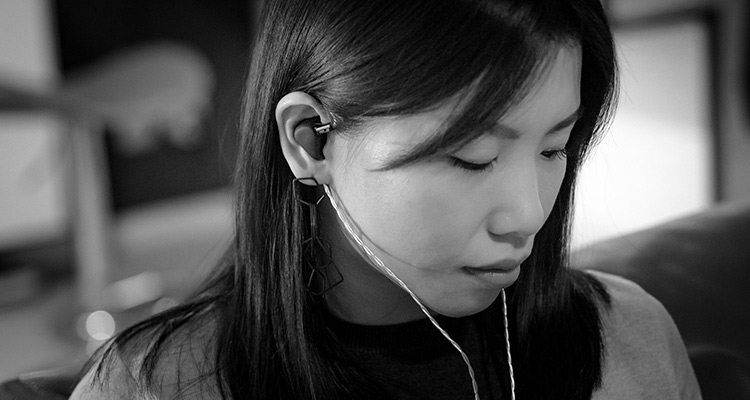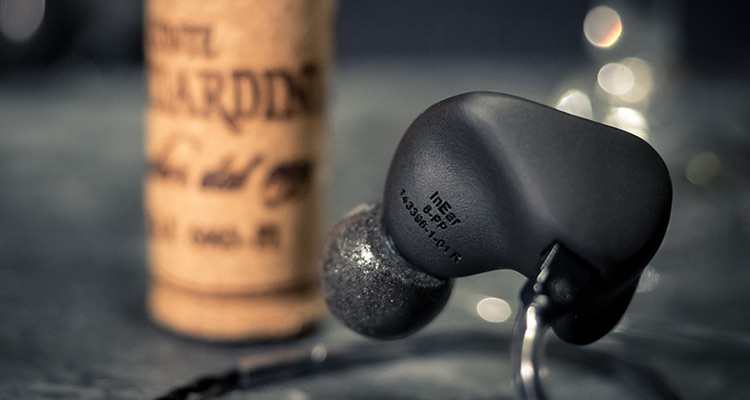Disclaimer: The InEar ProPhile 8 was sent as a sample in exchange for our honest opinion on this review. Many thanks to InEar for giving us this opportunity.
To read more on InEar products we have reviewed on Headfonics click here
Note, this review follows our new scoring guidelines for 2020 which you can read up on here.
InEar introduced the ProPhile 8 at CanJam Europe in September 2016. You can find my first impressions here
At that time the ProPhile 8 was still written with a hyphen linking the 8 (i.e. ProPhile-8). The build quality has since been slightly improved and the first orders were shipped in early December.
I was also one of the few lucky receivers of the first batch, but a marvelous IEM like the PP8 deserves a very thorough review.
Thus, the review process has been quite lengthy and it missed the window to be nominated as the best IEM of 2016. InEar is still on backorder and most customers are still waiting for delivery so I think the ProPhile should be dated as an early 2017 earphone.
A New Reference?
With a complex 8-driver setup in a 4-way crossover and two switches to adjust the sound signature, InEar ambitiously aims for nothing less than becoming the new reference for all in-ear monitors. Having already established a household name for their often imitated universal earphone design, InEar has further won a fanbase thanks to their pleasing tuning on the StageDiver 2 in 2013. But this time, they have set the bar really, really high.
My first impressions were very positive to phrase it conservatively. I am not sure if or how much InEar has further improved or tuned the PP8 based on the shown final prototype. But I hope this review is detailed enough to answer all questions that have been raised since then.
Packaging
The packaging of the ProPhile in-ears does not match their MSRP of almost 1.300 € – at all! We have a thin cardboard box with a see-through window. The presentation is cute and I can see it’s well-intentioned, but seriously, this is nothing that will wet an audiophile’s pants. We have breached the category of high-end universal portable hifi gear and there is no mistaking the ProPhile wants to be part of the very top level. But while unpacking the monitors, I just couldn’t feel it.
InEar’s background is very clear. They are a monitoring company for professionals. Their main products are customized monitors and if I had ordered a pair of CIEMs, the box with a window showing off my unique monitors and custom design would have me dancing in squares. But the ProPhile 8 is not a unique monitor; it’s a universal and kind of… dull. There is not much to see.
If this were manufactured in Japan, I would expect no less than a hand-written thank you card, a heavy wooden box with golden ornaments, a tissue with the sweat and blood of the staff, possibly an invitation to one of the employer’s funeral as he left his life for building the glorious product only for me… wait, I might be drifting off here. My point is, the ProPhile does not smell of luxury or high-end. I am not saying that InEar ever intended to do so, but perhaps they should. After all, apart from the packaging, these are an audiophile’s wet dream.
Accessories
Carry Case
The main accessory has to be the large PELI Protector 1030 Micro case. The Pelican cases are very popular among in-ear users. They’re made in the USA, they are rated IP67 dustproof and they are almost impossible to crush. The inside absorbs impacts through a rubber surface. Most CIEM manufacturers include the smallest version, though.
The 1010 case is also part of the StageDiver series. The 1030 is two sizes larger and thus provides more than ample space for the earphones and all the accessories. Personally, I don’t carry all the accessories with me and the 1030 case is too bulky for my messenger bag so I actually use the 1010 case even with the ProPhile 8 earphones. The 1010 still has more than enough space to hold the IEMs, drying capsule, adaptor, pen tool and several ear tips.
Tips
The default black silicone ear tips come in four sizes. Additionally, InEar includes a complete set of Comply TS-400 in S, M, and L. Of course, a 6.3mm adapter is mandatory in the professional field and InEar did not let that slide by. Also, a shirt clip might be useful for on-stage performers or otherwise active customers. For hygiene, the accessories include some cleaning tissues while drying caps help with maintenance.
The Black Pen
One tool is out of the ordinary, though. A black pen with a wired U-hook is usually not included with ordinary IEMs. Its main purpose is to clean the earphones and pull dirt out of the nozzle. However, in the case of the PP8, it is used to pull and flip the switches on the earphones. Yes, the wire can bend but it’s easy to straighten it out again and it prevents the user from applying too much force on the switches.
Cerumen Filter Set
Another cool feature that has been borrowed from the StageDiver series is the implementation of user-replaceable cerum filters. (Cerumen is ear wax.) Color-coded filters for left and right, as well as the replacement tool, are included with the ProPhile 8. Replacing them is very easy and explained in detail in the user manual.
Cable
As the company InEar specializes in custom monitoring, it should come as no surprise that the earphones’ cable matches the industry standard. Yet again Plastics1 provides a durable, twisted OFC cable with high flexibility and little memory. L-shaped termination should be the standard and luckily InEar follows.
At 140cm I found the length to be perfectly usable for high mobility and desktop use alike. However, the right-angled termination is very bold and flat. This allows very little reach and can cause issues with recessed sockets. For example, I can only use the Chord Hugo with the included adaptor via the big 6.3mm plug. The manufacturer does offer alternative choices, like those seen with Jomo Audio that does not have this issue.
Though the 2-pin cable is user-replaceable, InEar only includes a single cable with the PP8.
Build Quality
3D
The ProPhile’s housing is 3D printed. I am not sure about the material or its thickness but it feels very durable to me. The sound tuning switches are indented and well-protected from unwanted contact. Also, the cerumen filters should help the ProPhile last for a very long time. The cable connections are recessed and the socket should prevent the pin connectors to break off sideways. The ProPhile 8 seem to be built extremely durable and if the previous StageDiver series is any indication, one should not have any reason to address concerns.
A small miracle is how homogeneous the earphones seem to be. From the prototype I remember where the faceplate is supposed to be, but with the final unit, the transitions on the joints are absolutely seamless. As if the earphones were made from one piece. Bravo.
Design
Black. Well, that was easy.
Ok, ok, I have more to say but actually, I have perfectly summarized ProPhile’s design. Not completely dark black, but borderline dark gray, slate black. There is not a single logo or detail that wants to stand out from the all-black surface of the earphones. Not a hint of color was used. The only thing you can find on the IEM is the serial number near the nozzle. But since it’s laser-engraved into the shell, it also has no color and is just as black the rest of the earphone.
Matt
Well, there is one uniqueness that falls into the category of design. The surface is matt black. It’s not abrasive but smooth matt. I have never seen this material being used on any other IEM yet. For comparison, the all-black StageDiver series is glossy and prone to fingerprints. ProPhile’s surface is surprisingly resistant and I seldom notice smudges. After almost two months of daily use, I am still waiting for any signs of wear to show.
Understated
The design is extremely humble. It is not a damn cool looking black like Will Smith in M.I.B., instead, it is a low-key-as-a-ninja black. The earphone’s shape is nothing but practical, aimed at highest comfort. A bold and blocky design might attract more looks but this was never InEar’s intention. The ProPhile is a monitoring tool with a professional background and that is exactly what the company wants to emphasize. Usability maximized! No logos or flashy materials needed.
Comfort
You must be new around here if you haven’t seen me rave about the superb execution of the StageDiver housing. Not all ears are the same, but looking back to the release in 2013 up to now, it should be safe to say that the majority of users do not often have comfort issues with InEar’s genius universal design. It has since inspired many other manufacturers with the boldest imitations to date coming from Knowledge Zenith and iBasso.
Large Fitting
Due to popular demand from female customers and after opening the market to Asia, InEar managed to shrink the design and called it StageDiver S. If you are one of the users who prefer the smaller shell, I have bad news for you. The ProPhile are even bigger than the original version of StageDiver. However, the size increase is not that much and they still fit my girlfriend’s ears, even though she prefers the StageDiver 4S comfort-wise.
Over-Ear
The cable is worn over-ear and the ProPhile are inserted the same as with custom monitors. A wire helps to carry the earphones’ weight and to keep them in place. Even pulling the cable won’t easily dislocate them. The fit is tight, secure and the closest to a CIEM in a universal body yet.
When I just received the ProPhile 8, I was quite busy with tip-rolling and trying to train my muscle memory to remember the right twist and angle for best insertion. During this time, I did notice the cut-out of the switches on the inside. It would not scratch my auricle sore, but I felt that my StageDiver 2 were more comfortable to wear. However, by now I have found the right size of tips and insertion is finally as easy as a twist. Since then I find the ProPhile to be just as comfortable as the StageDiver.
Sound
Tuning
InEar absolutely nailed the Harman response target like I’ve never experienced with any IEM before. Everything sounds extremely effortless and natural. There is no emphasis anywhere on the frequency range, nor are there fatiguing peaks in mids or treble. The ProPhile are all about transparency, clarity, coherency and I regard them as a miniature materialization of the term high-fidelity even besting most high-end full-sized headphones.
Balanced
The tricky part here is to emphasize that the PP8 are not measurement-flat like the Etymotic ER4S, which many users perceive as bass-shy. Instead, they compensate the perceived bass quantity to just the right amount for pronouncing all instruments and voices equally. As a result, the ProPhile reproduce the most convincing timbre I have yet experienced from any multi-BA in-ear monitor.
Since the tuning of the PP8 is so incredibly well done, I won’t focus on the sound altering switches until later in a separate part. The following detailed sound description is based on the default settings with neither switch activated.
Bass
As already mentioned under the header “tuning,” the bass quantity hit the nail right on the sweet spot. Sub-bass is neither pronounced nor is it lacking. If asked for, the ProPhile can create some atmospheric rumble but it’s not out of proportion and thus doesn’t slow down the attack.
Quantity
From 30 Hz to 300 Hz the ProPhile follow the ideal target response closely in a downward slope. This does mean that InEar decided to add some quantity to bass that is north of neutral – approximately some meager 4-5 decibels. However, I would be very surprised if anybody should complain about it and not consider the tuning as natural sounding. Instead of saying the bass is neither strong nor lacking, neither boomy nor punchy, neither heavy nor thin, neither dark nor bright, I want to say that it is all of that. The PP8 proves to be a chameleon and it will match the recording respectively.
The kick drum hits low and hard, the contrabassoon sounds black and deep on the lowest octave, the organ roars authoritatively and the cello is so well textured that I want to count the strings. The ProPhile make it ridiculously easy to tell woods apart from brass. Furthermore, while being present, never have I found the rhythm section to draw focus in a Jazz trio or quartet. Or in any genre, for that matter. Speed is where these beasts excel at and even drummer Dave McClain can’t make them sweat. The PP8 are an ode to the prowess of balanced armature receivers.
Mids
The midrange continues to impress. My first impressions were that voices were very slightly recessed. However, after replacing the ear tips for better insertion this is not the case anymore. Based on the SpinFit ear tips, I hear a completely even midrange all the way up to the upper midrange of 6 kHz.
Vocals
Voices are placed evenly among other instruments unless the recording demands otherwise. The ProPhile do not sound great with either male or female voices – there is no difference in quality. Elvis Presley, Gregory Porter or Diana Ross, all of them sound shockingly realistic and well separated; S-sounds are void of harshness; electric bass guitars sound tight and detailed, but not crunchy or edgy. I can use the PP8 for hours and still not notice any fatigue.
Treble
Neutral
The transition from midrange to higher frequencies is very smooth and coherent. Overall, the treble is very flat and neutral. I am happy to hear that the PP8 play slightly relaxed around 7-8 kHz which helps to avoid any sibilance. It’s not recessed or lacking as it’s completely in tone with natural perception. I tried adding 3 dB with an EQ in this area and it made the output sound more artificial, hollow and harsh. Instead, the PP8 pulls out some extra sparkle out of the 10 kHz range.
Again, we are talking about just very few decibels. Yet this is enough to result in a very airy and highly defined treble that never tilts into piercing, edgy or sibilant tones. My depiction sounds overdramatized, in practice the higher frequencies sound simply right. There is no other word that would fit the description any better. To my ears, the ProPhile 8 have extremely realistic timbre in the treble and no violin, piccolo or cymbal sounds colored. I highly recommended the PP8 for fans of the Classical genre!
Upper Roll-Off
Using a sinus sweep, I was surprised to notice that the super high-frequency extension is technically not that impressive. After 11 kHz the sound pressure rolls off. This was quite unexpected since I find the treble to be very airy and all instruments are well-separated. The treble roll-off kicks in too high to have any noticeable effect on timbre or darkening violins. By no means can I rate the extension negatively because the ProPhile still has the best rendition of high frequencies that I’ve come across by in an in-ear.
Resolution
I am guessing most of the precise detail retrieval comes from the superb tuning and goes hand in hand with the great clarity that allows great timbre and equal presentation of all instruments. But also have I not yet noticed the multi-driver ever being challenged and sounding pressed or even distorted when plugged into a competent source. The ProPhile easily mastered my most demanding orchestral recordings. Even in complex passages, every instrument remained vivid.
Spatial Cues
In practice, the PP8 surprised me many times with small audio clues that I have never noticed as clearly before. For example, I long believed that the background vocal on What Kind of Man by Florence and the Machine was just a doubling of her voice. Now I can clearly hear a man behind her. Even on not so great recordings, like Adele’s My Same, the ProPhile makes it easy to recognize the finger-snapping as such, whereas it often sounds like sticks hitting each other with other ear-/headphones.
In Charles Lloyd’s Jumping the Creek the piano intro has some subtle(!) metal works in the background. The PP8 render them so realistically that I wondered what the hell my neighbors were doing in the backyard. Too easy? Try Jon Fält’s percussions with the Bobo Stenson Trio. Still too easy? The InEar would not even start clouding with Mikhail Pletnov & RNO playing the Manfred Symphony (Pentatone). The resolution is simply flawless and I’d place it up there with high-end magnetostatic headphones for layering and speed.
Soundstage
Drivers are hand-picked and channels are matched by 1 dB or closer. I can confirm this is the case with my unit. Unsurprisingly, the imaging on the PP8 is flawless. Playing Dr. Chesky’s test tracks, all voices are exactly at the announced position. The sense of depth is breathtaking, obviously partly due to the binaural recording. But even with regular stereo discs, the layering is great with holographic rendering. The soundstage is broad and deep alike. However, the ProPhile never appear super wide or very intimate.
Click on page 2 below for Tweaking The Sound




